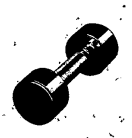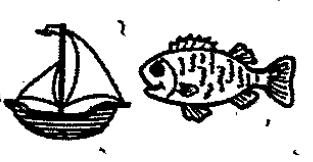Complete Solutions to EXERCISE of chapter MOVEMENTS IN ANIMALS of Class 6 book with complete answers and questions
| Class 6 | BIOLOGY |
| Chapter | MOVEMENTS IN ANIMALS |
| VGS PUBLICATION-BRILLIANT | EXERCISE |
| Number Of Questions | 94 |
| Academic Year | 2023-24 |
Imagine a situation where you have no bone in your body. Describe with reasons, what would happen.
View SolutionTry and indentify the joints in the body of a goat or a cow . Make a list of these joints.
View SolutionWhat dificulties would you face if your fingers had only a single bone ?
View SolutionWhat is a ball and socket joint ? How it is different from hinge joint ?
View SolutionGuess who I am
I am a joint that works life joint of doors and windows
View SolutionGuess who I am
I help to join two bones.
View SolutionGuess who I am
I am a joint between upper jaw and skull.
View SolutionGuess who I am
I am a chiain small small bones..
View SolutionGuess who I am
I join bone and muscle.
View SolutionCollect X-ray films and identify which body parts they represent and write a note on them
View SolutionPrepare a questionnaire to take interview with yoga teacher or PET sir, about Asanas and Exerceses.
View SolutionCrawling snake, jumping frog, flyirig bird are they amazing to you. Why do you think so?
View SolutionList out the activities that you performed at your home and which joints were involved in each activity?
View Solution" Which joints are involved in plucking flowers, making garlands"- Ravi's mother asked .-what is the answer?
View SolutionWhat is this instrument ? How do you use this ?

View SolutionGive some examples where you feel the movement of muscles.
View SolutionHow do muscles work?
View SolutionWhat are tendons ? Give examples where you feel these tendons in your body.
View SolutionHow many vertebrae are there in the backbone of an infant? What happens to them later?
View SolutionWhat is Pelvic girdle ? How do you identify it ?
View SolutionDescribe the structure of the following with the help of labelled diagrams.
Centrosome
View SolutionWhat are flexible bones and cartilage ? Explain.
View SolutionWhat is the function of joints in our body ? Explain.
View SolutionDraw a neat and labelled diagram of ball and socket joint and write its location.
View SolutionWhat is a Hinge Joint ? How it works ? Explain.
View SolutionWhat is a neck joint ? Explain its function.
View SolutionWrite a note on "Fixed joints".
View SolutionLet us see how animals move from one place to another. Fill in your observations in the table.
View SolutionHow do fish swim in water ? Explain it with an example.
View SolutionHow do you appericiate locomotion in birds?
View SolutionHow does snake move ? Explain its locomotion.
View SolutionWhat is locomotion ? Explain locomotion in snake.
View SolutionHow do you show the bulging muscle inside your upper arm.
View Solution
Could you identify the different muscles that move as you open and close each finger?
View SolutionHow do you identify the Jaw bone ?
View SolutionWhat is clavicle and how do yon identify it? What are shoulder bones ?
View SolutionHow can you feel your ribs ?
View SolutionWhat is rib cage ?
View SolutionWhat is backbone and vertebrae ? How do you identify?
View SolutionWhat is a skeleton equation ?
View SolutionDraw the diagram of a skeleton and label the parts.
View SolutionDraw the diagram of a skeleton and label the parts.
View SolutionWhat are ligaments?
View SolutionHow does a bone move?
View SolutionHow do we perform different types of movements ?
View SolutionWhat are called muscles ?
View SolutionHow can you say that your backbone behaves like a spring?
View SolutionWhy should be put back the snail from where it was collected?
View SolutionWhat is the importance of locomotion in living organism ?
View SolutionThe average adult heart beat per a minute is
View SolutionThe world's largest living bird is
View SolutionAmong the following this is the one of the fastest mammals
View SolutionSome muscles have round, white, rope-like fibres at their ends that connect them to the bone. These fibrous structures are called
View SolutionThe smallest bird is
View SolutionThe joint present in knee is ......
View SolutionThe type of joint seen in the shoulder
View SolutionKnee joints are
View SolutionMuscular foot is a locomotory organ in .......
View SolutionFixed joints are found in
View SolutionThe fore Iimbs of crow are modified as
View SolutionWhich animal has an outer skeleton?
View SolutionThe total number of bones present in our body is
View SolutionWhich of the following protects our lungs?
View SolutionWhich of the following is an example of hinge joint?
View SolutionA muscle can
View SolutionThe undulatory locomotion is found in
View SolutionSnail moves with the help of its
View SolutionVertebral column of man has ___ vertebrae.
View SolutionWhich bone protects the lower abdominal organs such as the urinary bladder rectum and uterus ?
View SolutionWhich of the following Joints is immovable ?
View SolutionThe small intestine in adult is about ____ meters long.
View SolutionWe cannot move ____when we open our mouth.
View SolutionBones
View SolutionThe skull Is really ___ bones, not one single bone.
View SolutionA bone can rotate easily in all directions in ___ joint.
View SolutionThe joint responsible to move our head up and down and side to side is
View SolutionHumans and giraffes have the same number of bones in their
View SolutionThe world's largest living bird is
View SolutionOur backbone works like a
View Solution___ work in pairs.
View Solution___ join muscles to bones.
View SolutionThe ___ are the only organ in the body that can float.
View SolutionMark the odd one among the following options
View SolutionChoose the correct statement :
View SolutionPelvic bones
View SolutionAssertion (A) : The elbow joint is a hinge joint.Reason (R) : Hinge joint allows movement in one plane only.
View SolutionAssertion (A) : Shoulder is the region where fore limb or arm joins the body. Reason (R) : The two bones at the shoulder are called shoulder bones.
View SolutionAssertion (A) : Earthworm has muscles that help to extend or shorten body. Reason (R) : Muscles can only pull and not push.
View SolutionAssertion (A) : Snails move with the help of muscular foot. Reason (R) .: The outer skeleton of a snail is called the shell.
View SolutionAssertion (A) : Entire skeleton of shark is made of cartilage, Reason (R) : Cartilage is also found in joints in body.
View SolutionAssertion (A) : Cartilage covers the ends bones. Reason (R) : Cartilage acts as a shock absorber and reduces friction between bones
View SolutionWhich part of the ear lobe shown in picture has cartilage?
View SolutionThe common feature in both the things below is

View SolutionThe Joint shown in pictures A, B, C, D are respectively.
View Solution
EXERCISE questions and complete solutions for chapter MOVEMENTS IN ANIMALS of VGS PUBLICATION-BRILLIANT of Class 6